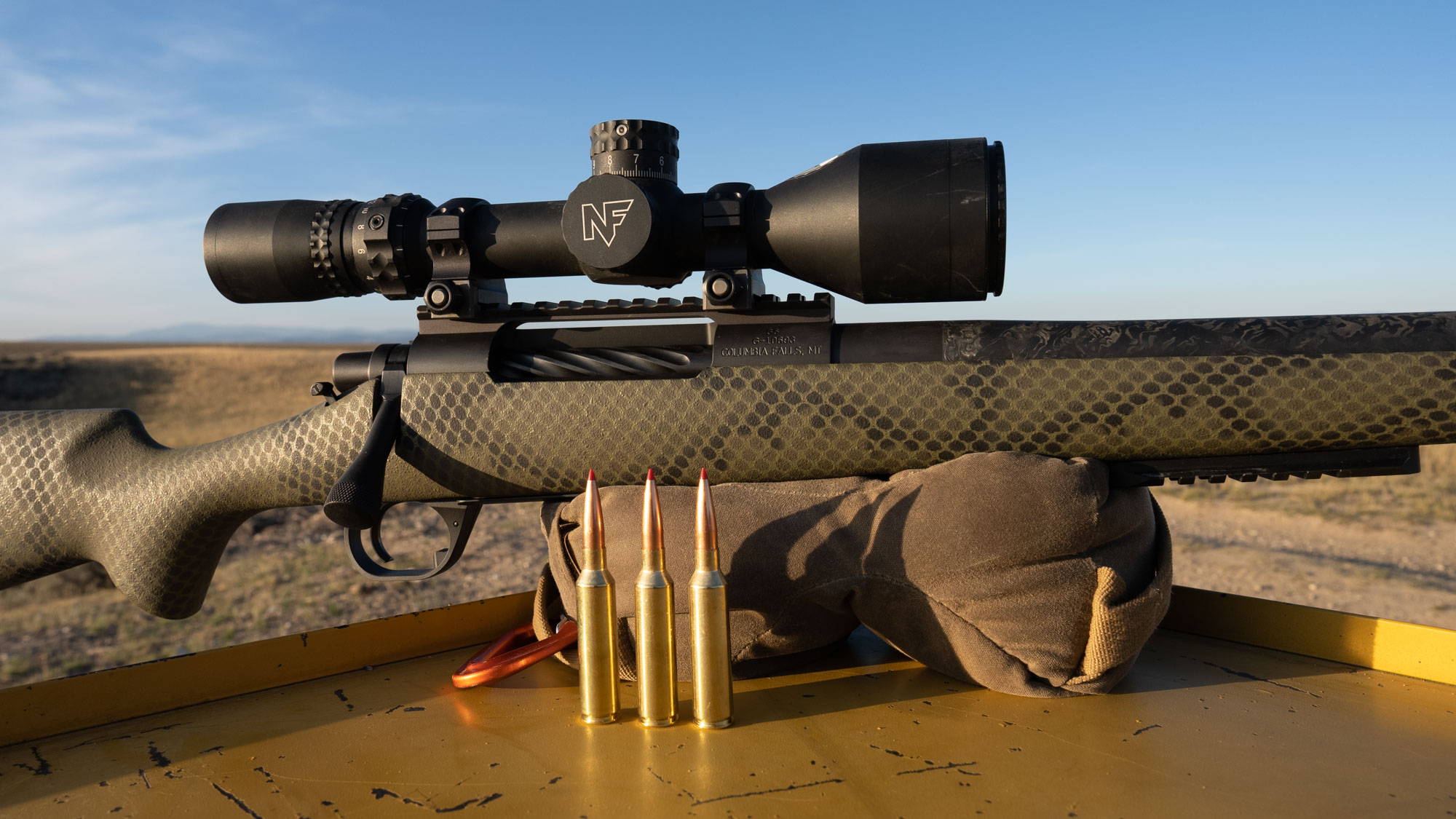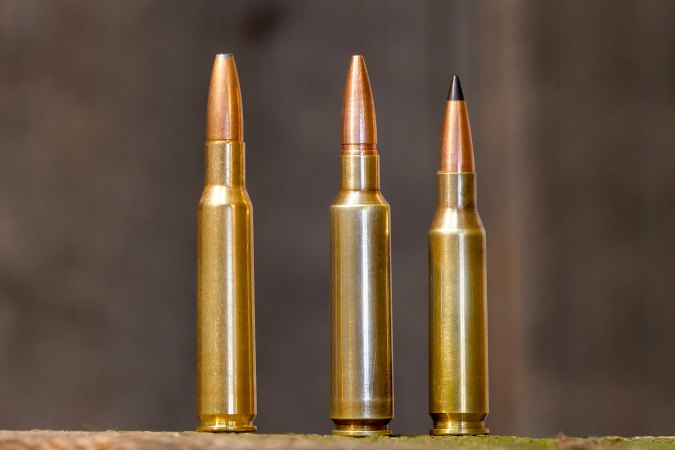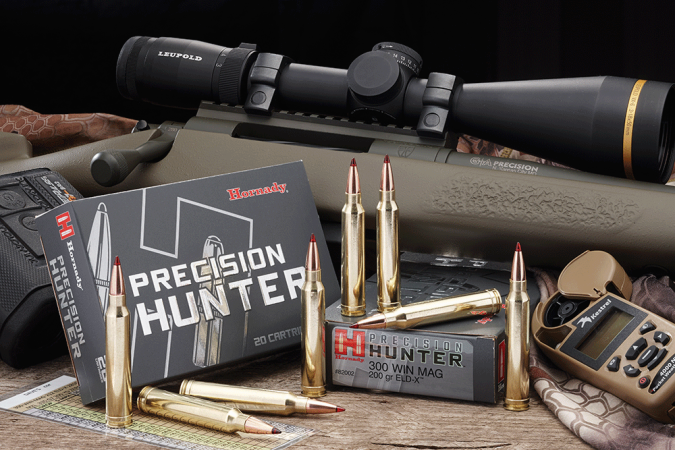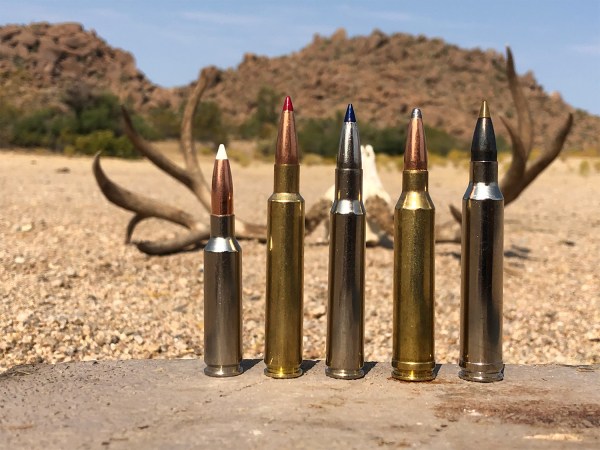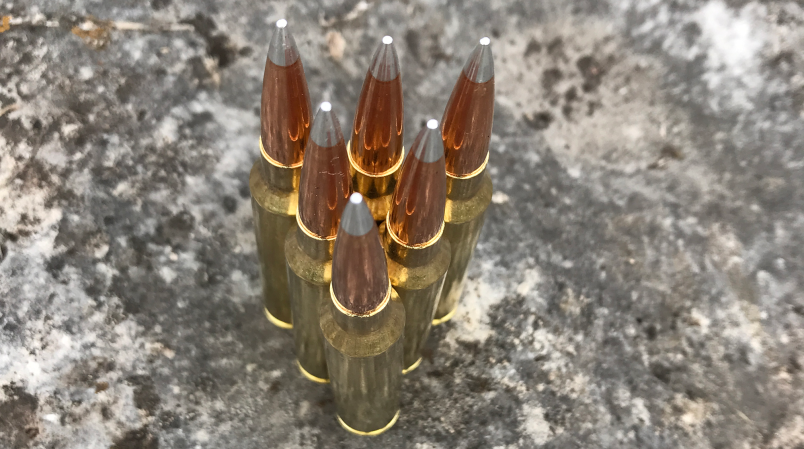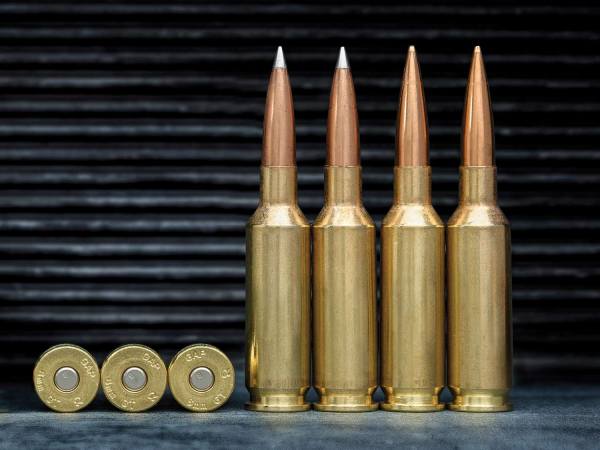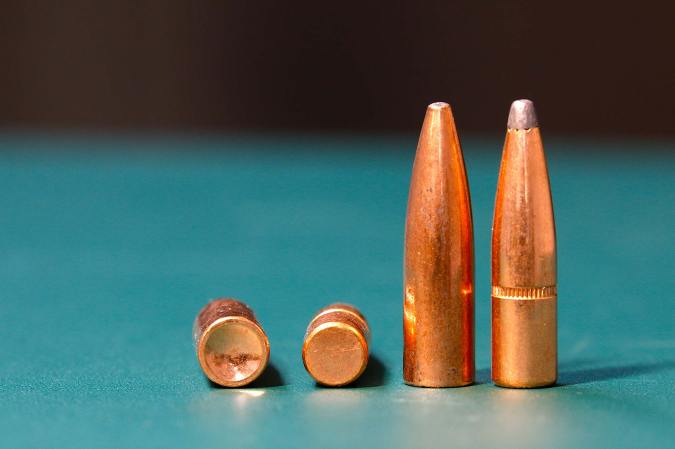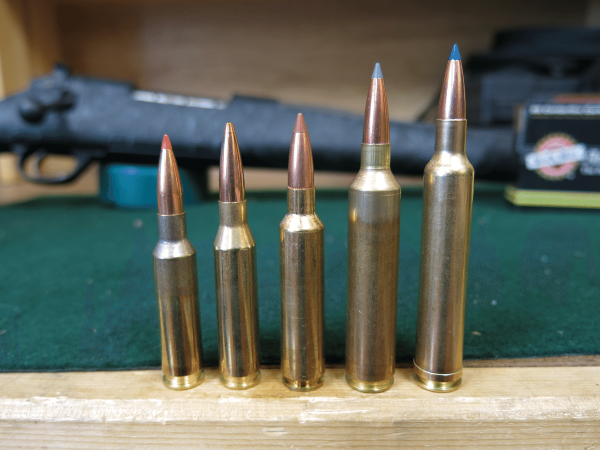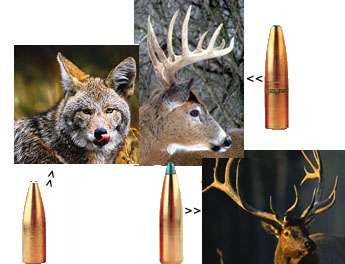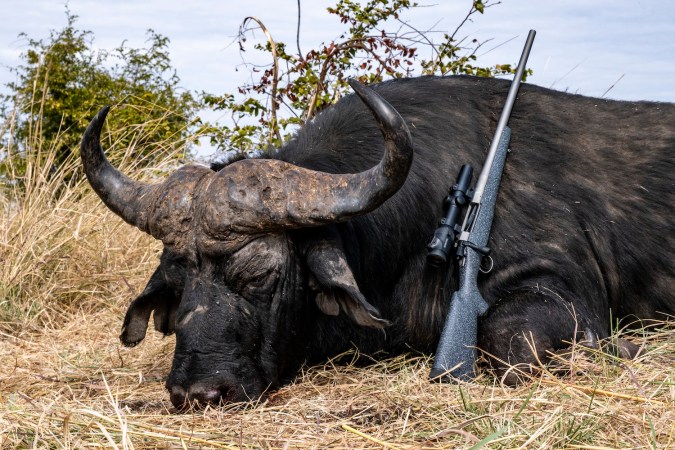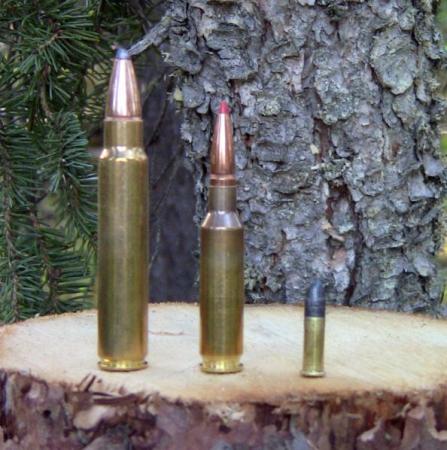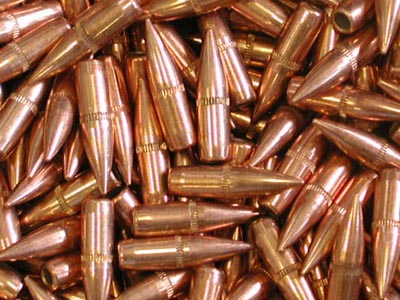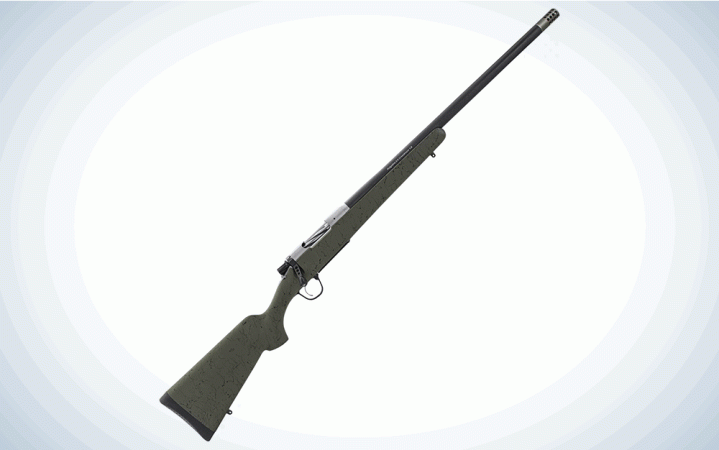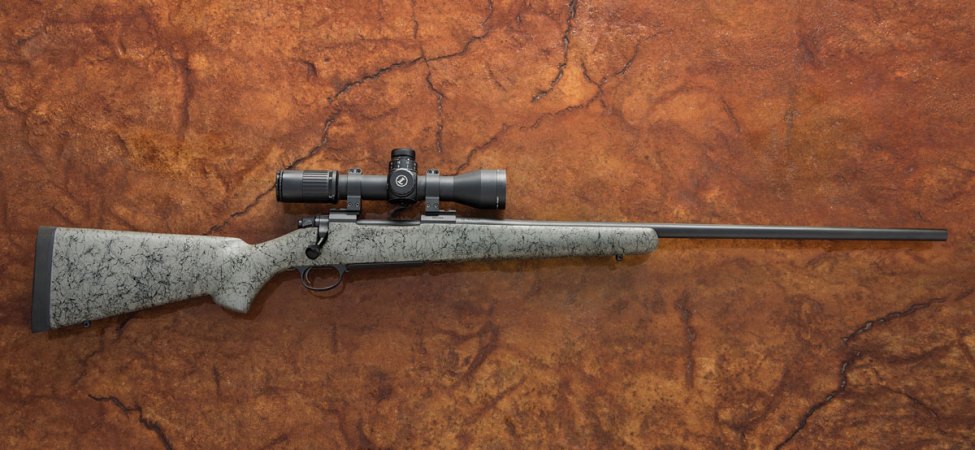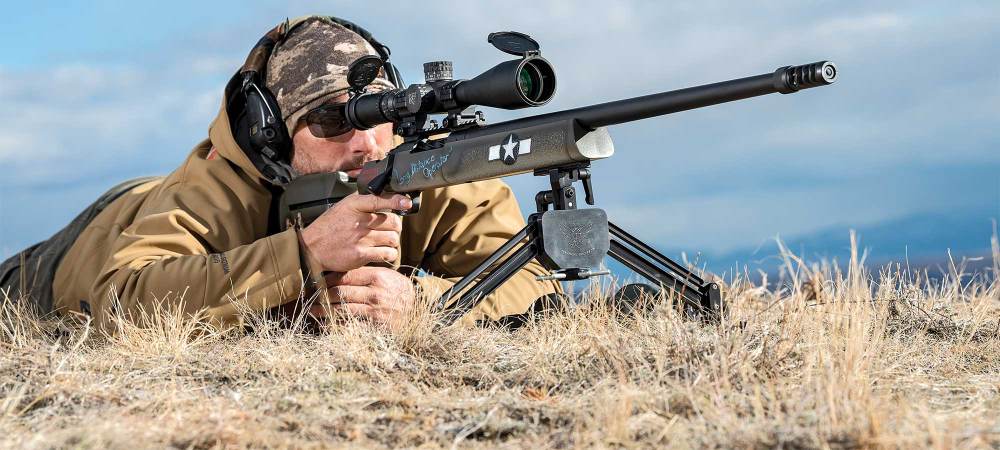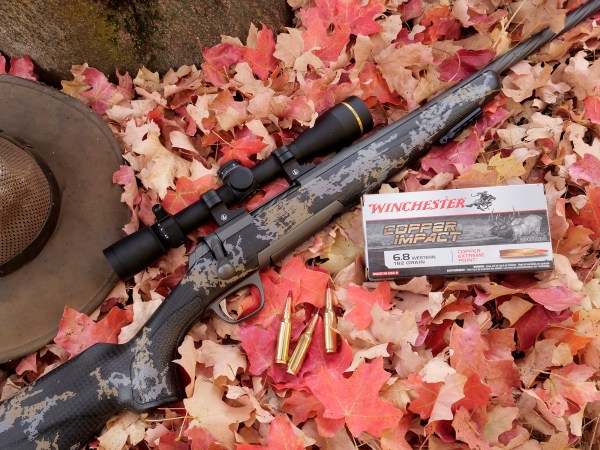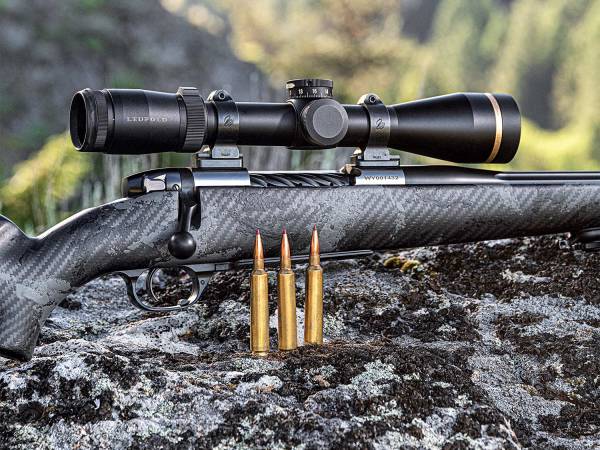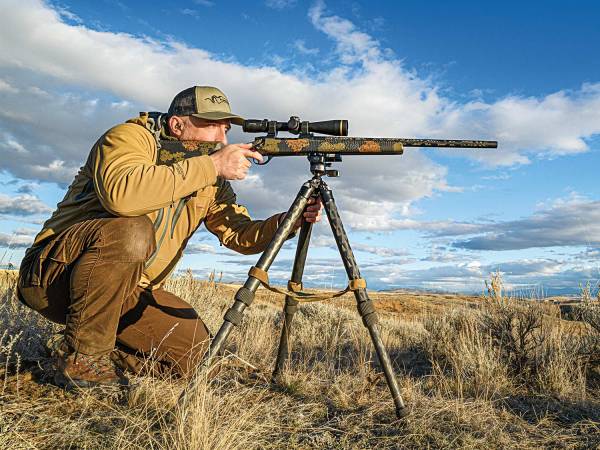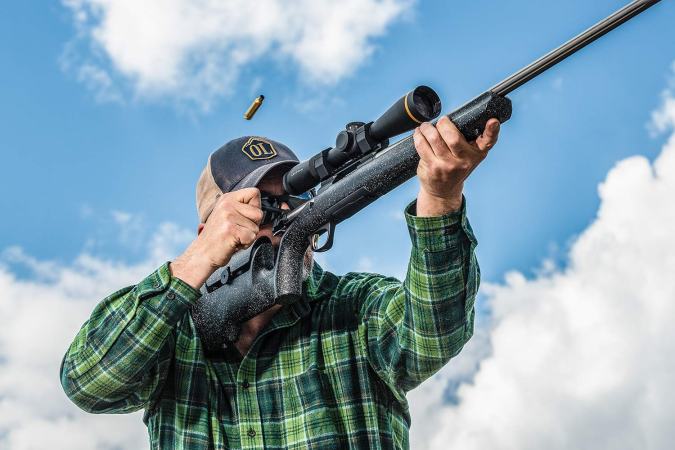We may earn revenue from the products available on this page and participate in affiliate programs. Learn More ›
The Hornady 7 PRC is a new long-range hunting and competition cartridge that slides neatly into the gap that exists between the 6.5 PRC and 300 PRC. The best way to think about this round is as an updated version of the venerable 7mm Rem. Mag. I’ve been hunting and shooting with the 7mm PRC for a couple months now and I think it is going to do extremely well, particularly with Western and open-country big game hunters.
Maybe you’ve already heard some chatter about the 7 PRC. It’s been one of the worst-kept secrets in the firearms industry since the cartridge was approved by SAMMI earlier this year. But now that Hornady has officially unveiled the cartridge at the NASGW show in Kansas City this week, we’re clear to talk about the round openly.
7mm PRC Specs
- Bullet Diameter: .284 in. (7mm)
- COL: 3.340 in.
- Case Length: 2.280 in. (standard long action)
- Case Head: .532 in. (uses standard .540 in. magnum bolt face)
- Shoulder Angle: 30 deg.
- Twist: 1:8
- Muzzle Velocity: 2900 to 3000 fps
- SAAMI Max Pressure: 65,000 psi
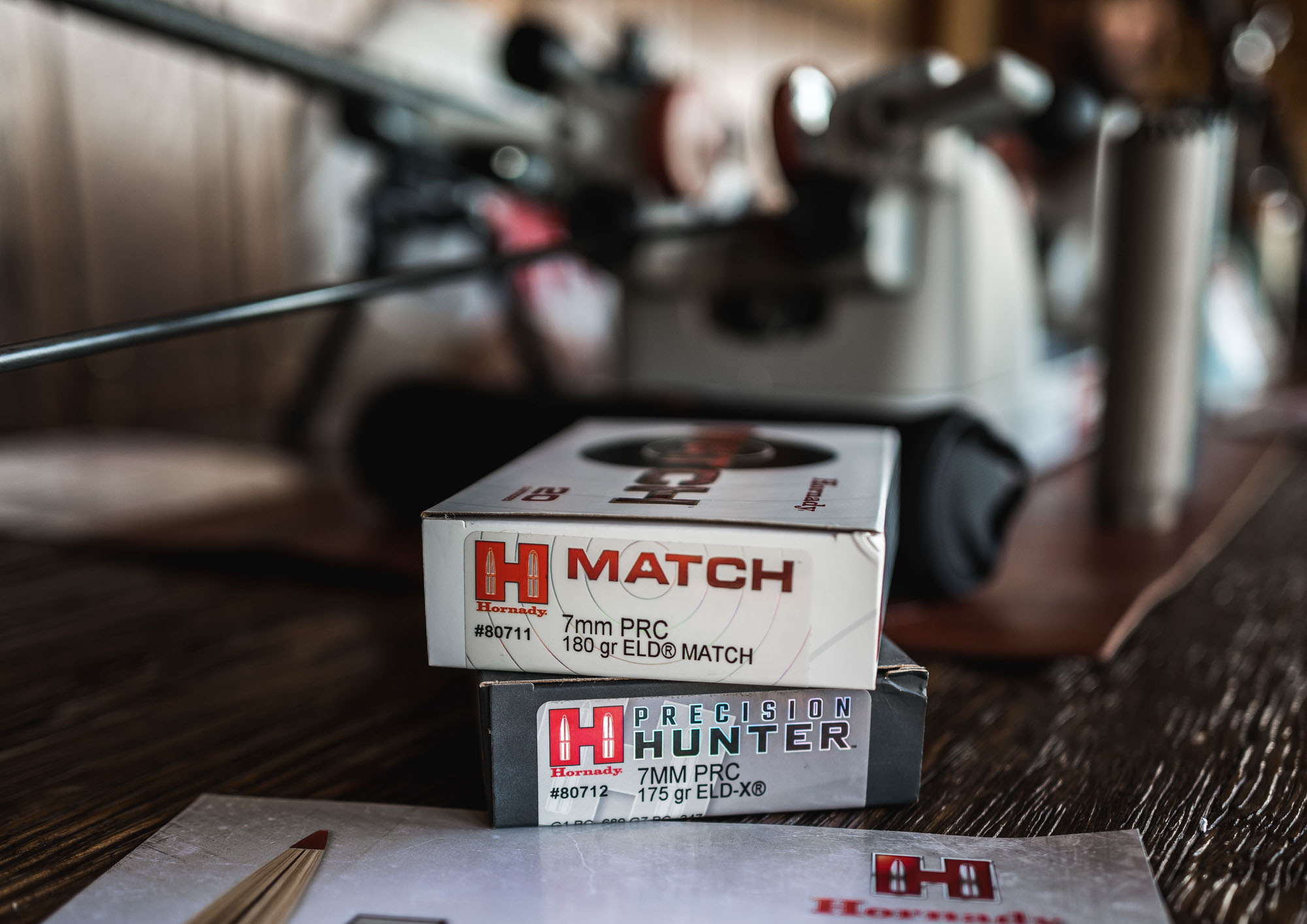
Initial 7 PRC Factory Ammunition Offerings
Hornady is loading the 7 PRC with three different bullets to start. From heaviest to lightest they are the 180-grain ELD-M, 175-grain ELD-X, and 160-grain CX copper alloy bullet. The 180-grain ELD-M is in Hornady’s Match line and has an MSRP of $69.15 per box of 20. The 175-grain ELD-M is in the Precision Hunter line and has an MSRP of $71.40 per box. The 160-grain CX is in Hornady’s Outfitter line and has an MSRP of $73.07 per box.
Match Load: 180-grain ELD-M
The 180-grain ELD-M is a match bullet that brings an absurdly high BC to the party. The G1 and G7 values at Mach 2.5—which is relevant for shots out to 200 yards and a bit beyond—are .816 and .411 from a 1:7.5 twist barrel. From a factory standard 1:8 twist these values will be a touch lower. For long-distance shooting, which is the forte of this bullet, the G1 and G7 figures are .782 and .394, respectively. Those are calculated at Mach 1.75.
When you compare this to other match bullets on the market in any caliber, you won’t find many that put up equivalent numbers. As such, out of a 7mm PRC, the 180 ELD-M is going to be one of the flattest-shooting bullets out there.
Hornady lists the muzzle velocity on this factory load at 2975 fps, which is based on their testing with a 24-inch barrel. Through the two 7mm PRC rifles I tested, both of which had 24-inch barrels, my velocities were 2925 fps with one and 2900 fps with the other. (The rifle that turned in the faster velocity was equipped with a suppressor, which might account for the extra 25 fps.)
Of course, some barrels are faster than others by nature, so we might find rifles from other manufacturers turning in speeds closer to what’s printed on the ammo box. And shooting a rifle with a 26-inch barrel, which will be reasonable for some applications with this cartridge, will up the velocity a bit too.
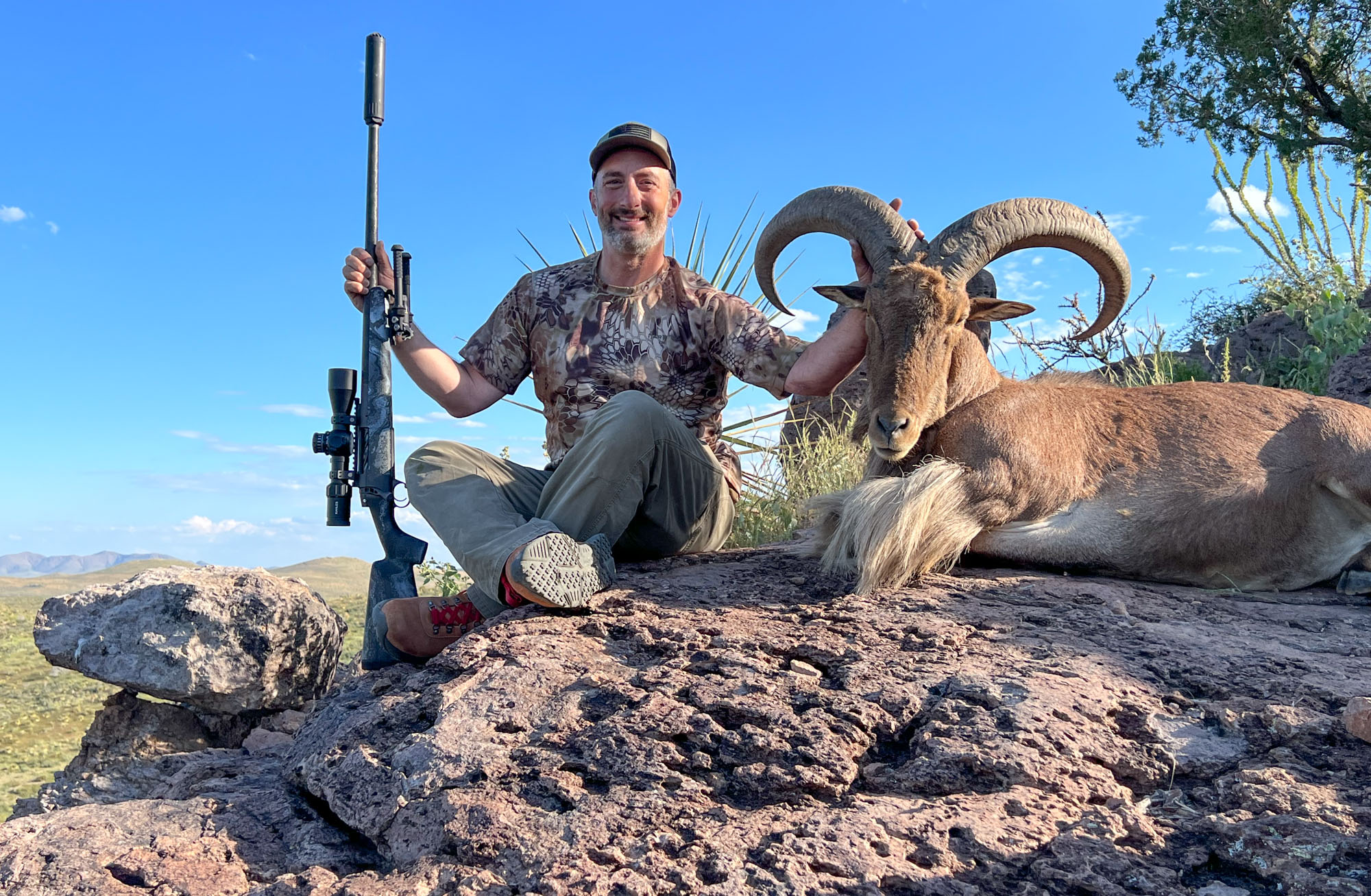
Hunting Load: 175-grain ELD-X
This bullet is going to be Hornady’s bread-and-butter hunting load for the 7mm PRC, and it really showcases the advantages of the cartridge over other popular 7mm magnums. With a published muzzle velocity right around 3000 fps (from my rifles this load shot at 2988 fps), it is another hard-hitting and flat-shooting offering. Because the cartridge calls for a 1:8 twist and its shoulder is set back a bit, it is able to propel the heavy-for-caliber bullets, like the 175-grain ELD-X and 180-grain ELD-M, effectively and efficiently.
While the 28 Nosler has greater case capacity than the 7mm PRC, problems arise when you try to load these long, heavy bullets because they sit so far back in the case. That can lead to erratic performance. In addition, the SAMMI twist rate for the 28 Nosler is 1:9 (though many rifle companies produce their 28 Nosler barrels with a 1:8 twist), which is not ideal for the heavier 7mm projectiles.
That said, the 28 Nosler shooting 175-grain bullets gains about 125 fps over the 7mm PRC. The question becomes whether that extra velocity makes coping with the 28 Nosler’s finicky nature worth it.
Copper Alloy Load: 160-grain CX
The third bullet that Hornady is loading for the 7 PRC is the 160-grain CX, which is a copper alloy projectile. Prior to the launch of the 7mm PRC, the heaviest 7mm CX bullet Hornady made was 150 grains, which works well in the legacy 7mm cartridges with their slower twist rates.
But with the 7mm PRC 160 grains is about the lightest you want to go with your bullet selection, so Hornady created a non-lead bullet for the round. As with the 175-grain load, the published factory muzzle velocity is right at 3000 fps.
This is the one projectile for the 7 PRC I haven’t had any trigger time with, so I can’t comment on its performance in the field. But the design is very interesting. Hornady basically mimicked the profile of the 180-grain ELD-M bullet to create one of the sleekest and highest BC monometal bullets out there. The BC values are .596 (G1) and .300 (G7). Barnes’s 7mm 168-grain LRX, which is the nearest equivalent, has a G1 BC of .550.
7mm PRC Design Advantages
The 7mm PRC is the product of the philosophy of modern cartridge design. The most notable (and notorious) example of this is the 6.5 Creedmoor, though plenty of other recently introduced cartridges were also engineered with these design principles. Examples include the 300 PRC, 6.5 PRC, 6mm GAP GT, 6.5×47 Lapua, and others.
The hallmarks of modern cartridge design include:
- Faster twist rates to stabilize heavy-for-caliber, long ogive, high BC bullets
- Adequate neck length on the case for consistent neck tension
- Headspacing off a steep-angled shoulder
- Minimal case taper
- Fine-tuned throat dimensions and taper (usually 1.5 deg.) in chamber
- Moderate muzzle velocities that deliver consistent shot-to-shot MVs and take advantage of the aeroballistically-efficient bullets the cartridge is designed for. This leads to better precision and longer barrel life
The 7mm PRC incorporates all these elements. Because the cartridge has an overall length of 3.340 in., it can also run in standard-length long-action rifles. The case head on the 7 PRC is .532 inches, meaning that any long-action rifle with a .540-inch bolt face can be rebarreled to run the round.
The parent case of the 7mm PRC is the 300 PRC/375 Ruger. You’ll hear some people say that the 7mm PRC is a necked-down 300 PRC. Technically this isn’t the case as the shoulder has also been moved back compared to the 300 PRC.
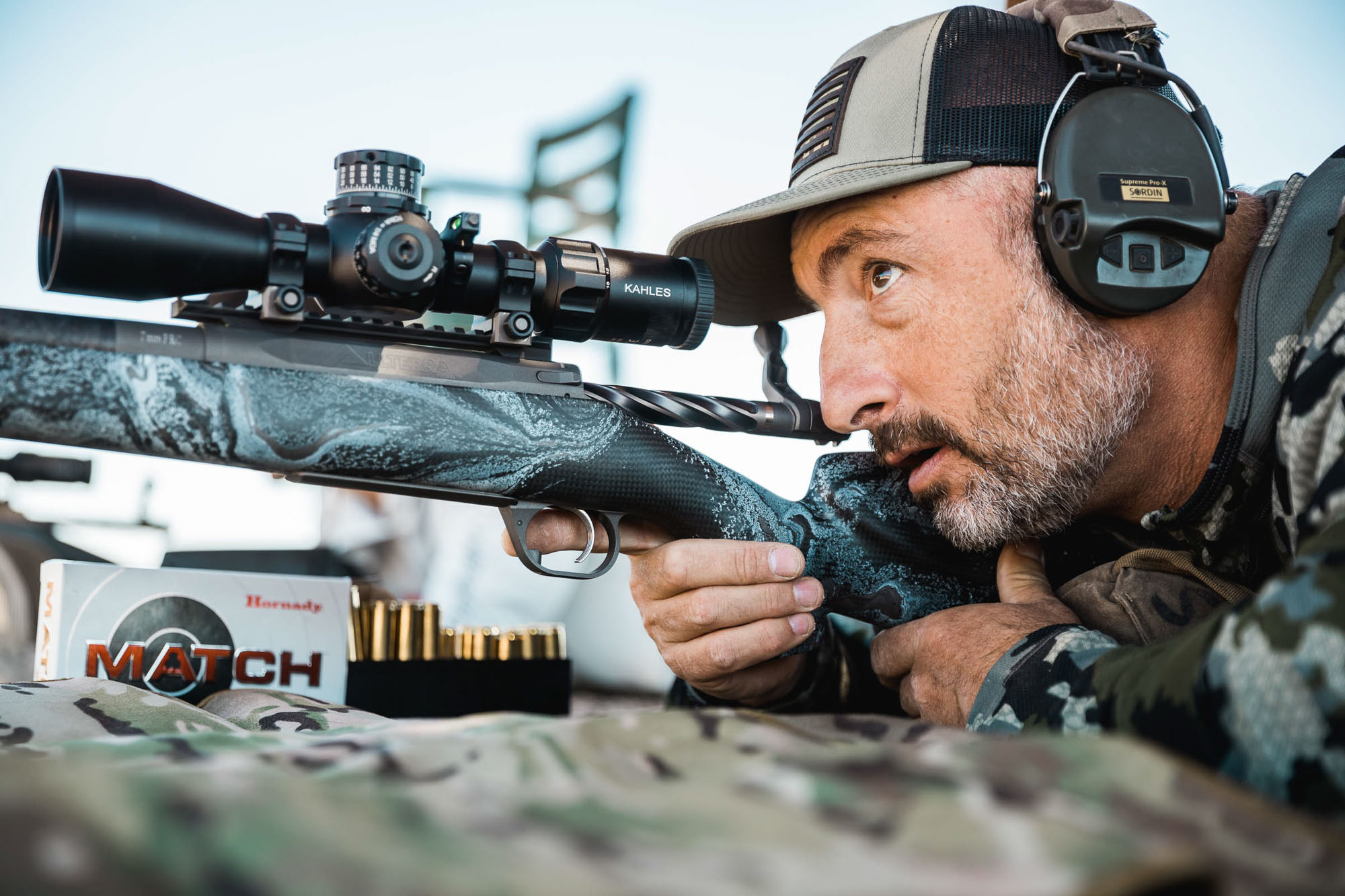
7mm PRC At The Range
I’ve had extensive trigger time with two different rifles chambered in 7mm PRC so far. One was an Allterra Arms Carbon I used for a week down in Texas. The other is a Proof Research Glacier Ti I’ve been hunting with this fall.
The Allterra Arms Carbon has a base weight of 6.75 pounds and mine was configured with a Huxwrx suppressor, a Kahles 318i scope and an Atlas bipod, which adds another four pounds or so to the rig. That 10.75-pound rifle made for an eminently shootable system that handled the recoil of the 7 PRC really well.
I had a several range sessions with that rifle where I put 40 to 60 rounds downrange at a pop and was able to do so without feeling beat up by the recoil. For comparative purposes, the 7mm PRC has about 30 percent less recoil than the 300 PRC and about 20 percent more recoil than the 6.5 PRC.
When stacked against other 7mm magnums in a 10-pound rifle, here’s where the 7mm PRC sits in terms of recoil. Note that the recoil figure for the 7 PRC is based on a 175-grain ELD-X, while the others use a 162-grain ELD-X, which is more in keeping with those cartridges’s twist rates.
- 7mm PRC 175-grain ELD-X: 23.80 ft.-lb.
- 7mm Rem. Mag. 162-grain ELD-X: 20.85 ft.-lb.
- 7mm STW 162-grain ELD-X: 25.21 ft.-lb.
- 28 Nosler 162-grain ELD-X: 29.84 ft.-lb.
The Proof Glacier Ti is a lightweight hunting rifle, with a base weight of 5 pounds, 15 ounces. With scope (Nightforce NX8 2.5-20), rings and the short section of Pic rail I added to the fore-end to attach a bipod it came in at 8 pounds, 1 ounce. The bipod, which I kept off the rifle unless a shot called for it, added another pound.
This Proof rig, with no muzzle device, had noticeably more felt recoil. It was still manageable, but not nearly as comfortable during longer shooting sessions from the prone position. As a hunting tool, which is its primary purpose, it shot just fine.
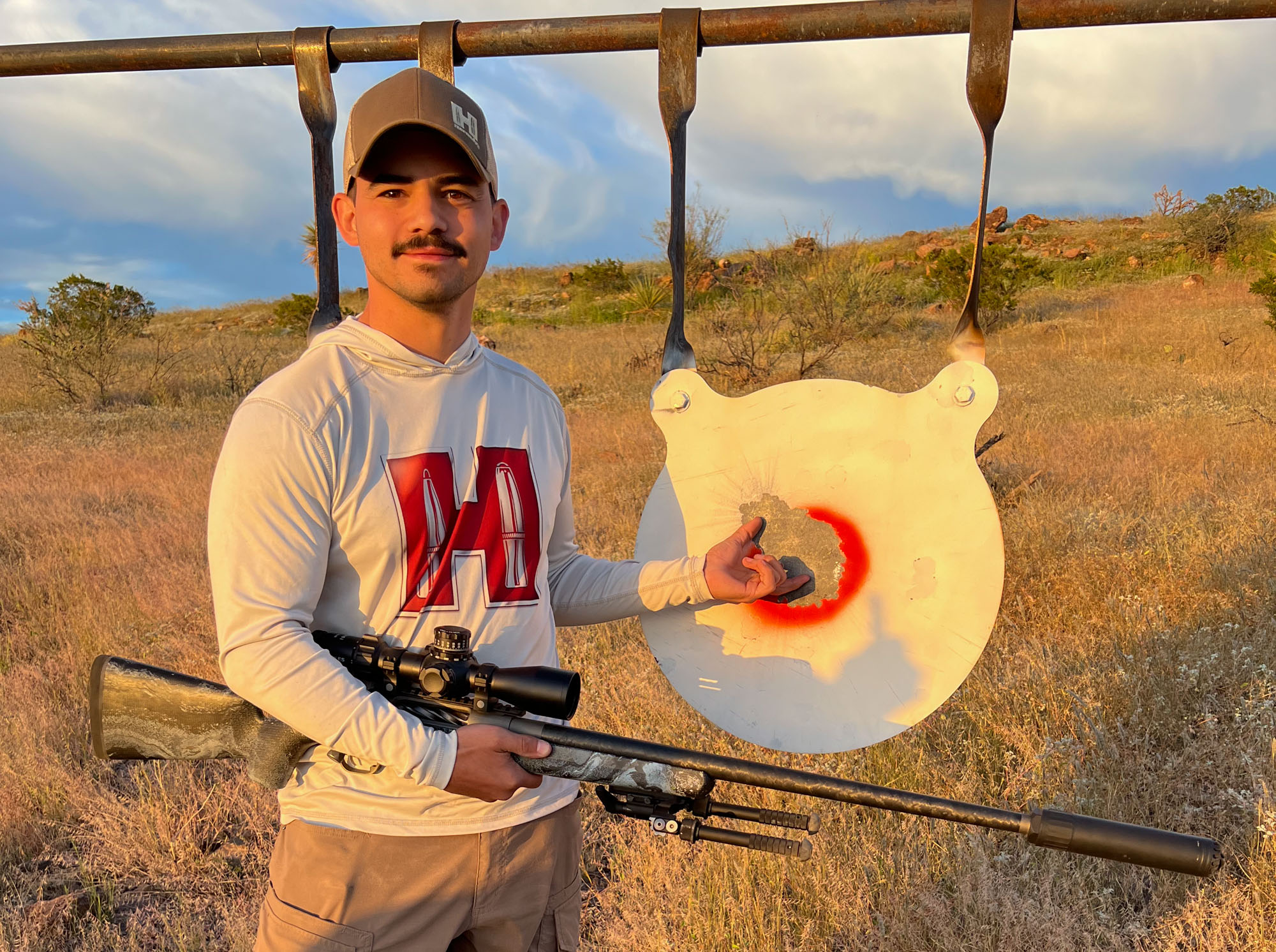
7mm PRC Accuracy
I enlisted the help of Miles Neville, one of Hornady’s engineers, to gather accuracy data for the 7mm PRC. Together we shot a bunch of 5-shot groups at 100 yards with Hornady’s factory ammo, along with some 10- and 20-shot groups. We also stretched the round out on steel, shooting at distances from 300 yards out to a mile (1,760 yards). We did this work with the Allterra Arms rifles during a week-long trip to Cibolo Creek Ranch in Texas.
The 180-grain ELD-M shot very nicely for both of us. The average size of all our five-shot groups at 100 yards was .803 inches. My rifle, the Allterra Carbon, shot especially well with a couple five-shot groups in the .5s (.558 and .562 inches) and an overall average group size of .726 inches.
I put a 10-shot group through my rifle that measured 1.213 inches, while Miles put a 20-shot group through his that measured 1.664 inches. The point of this shooting was to get a feel for how the carbon-fiber barrels on our rifles handled intense strings of fire as much as it was to measure the accuracy of the cartridge.
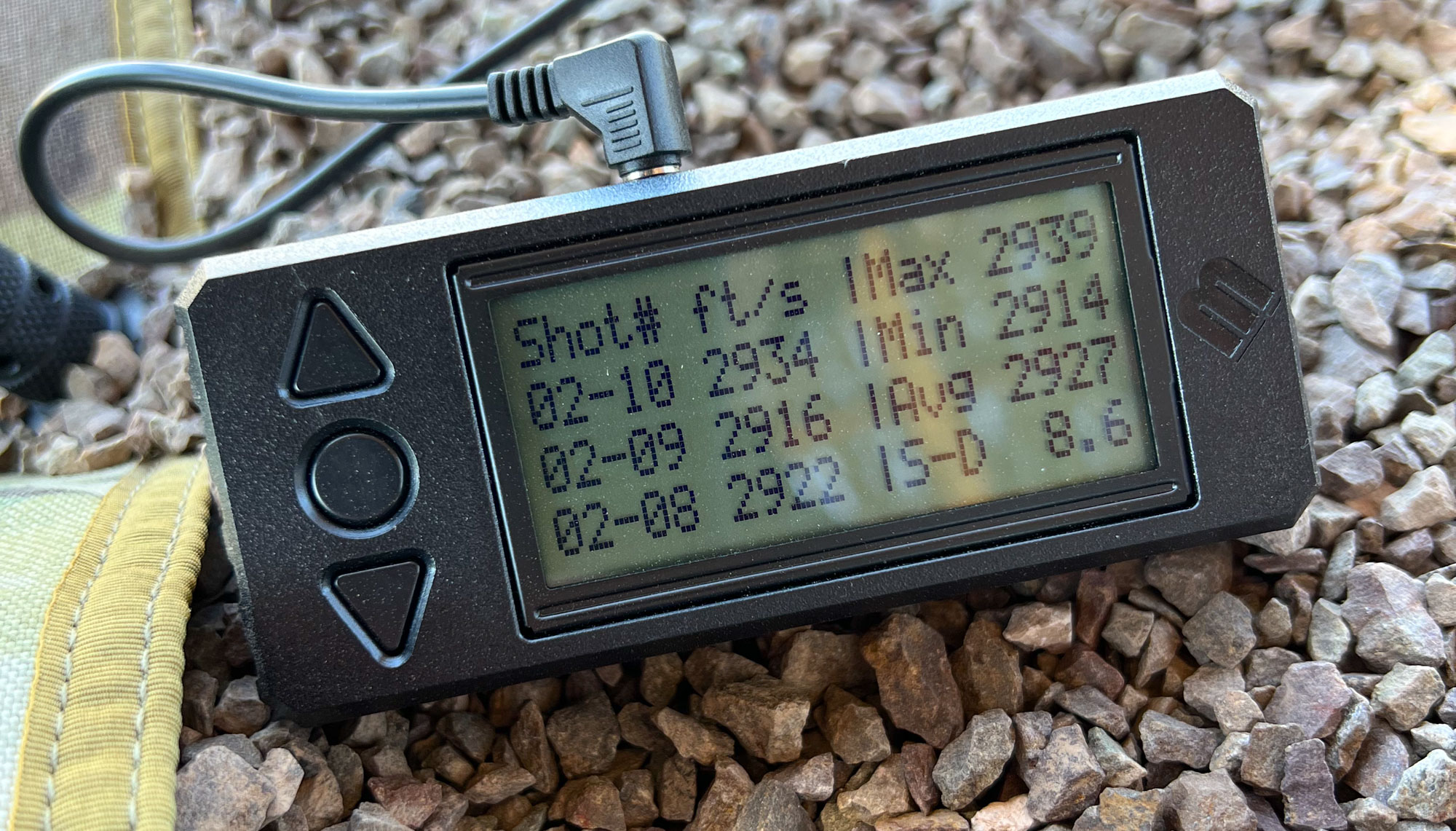
Before shooting these groups for accuracy, I chronographed the 180s in my rifle. The 10-shot string averaged 2927 fps with an extreme spread (ES) of 25 fps and a standard deviation (SD) of 8.6. That ES and SD are phenomenal for factory ammo, where ESs from 40 to 50 fps and SDs in the mid-teens are usually considered very good. If Hornady can maintain this consistency with their factory match ammo, that bodes very well for shooters participating in long-range competitions who don’t want to handload.
With my Proof Glacier Ti back home in Montana, I only put a few five-round groups through it, as I was mostly concerned with getting it ready to go hunting. But the three five-shot groups I did print with the 175-grain ELD-X ammunition averaged .770 inches, with the best group measuring .582 inches.
The 7mm PRC at Long Range
While the accuracy of the 7 PRC at 100 yards is impressive, particularly with a magnum cartridge in sporter-weight rifles, the proof of the ability of any long-range round is how it performs at distance. Not surprisingly, the 7 PRC did well here too.
I shot a lot at distances between 300 and 1,000 yards and both the 180-grain ELD-M and 175-grain ELD-X gave consistent results. They grouped well on freshly painted steel targets where it was easy to spot impacts and judge group size. One of the best groups was turned in by Miles, who shot a 4.5-inch group with the 180s on steel at 1,000 yards.
The round shoots flat, too, and does a great job retaining velocity and bucking the wind. Through my rifle the 180s with a 100-yard zero drop just 1.78 inches at 200 yards, 7.7 inches at 300 yards, and 17.94 inches at 400 yards. At 1,000 yards my elevation correction was just 5.94 mils while the 180s were still traveling 2120 fps and carrying 1794 ft.-lb. of energy.
Hunting with the 7 PRC
I used the 175-grain ELD-X to shoot a very nice aoudad ram in Texas at about 320 yards. The bullet performed perfectly, dropping the ram on the rocky cliff where he stood surrounded by a couple dozen of his fellow sheep.
Other hunters using the 7mm PRC on aoudad had similar results at distances out to 500 yards. It isn’t surprising that a 7mm bullet weighing 175 grains and traveling over 2900 fps is going to make for a devasting hunting round, but it was good to see that supposition confirmed.
I also took the 7 PRC elk hunting in Colorado and will use it in Montana this fall as well. I think that hunters in my part of the country will take a shine to the 7mm PRC, especially if they are not sold on big-game capabilities of the 6.5 PRC and other milder rounds and if they’re debating what elk rifle to use.
I don’t think anyone but the most churlish ballistic stick-in-the-mud would hesitate to consider this 7mm magnum adequate for elk and other North American big game, and given that it generates about a third less kick than the 300 PRC and other .30-caliber magnums it strikes a sweet spot.
Reloading the 7mm PRC
This round is going to be a good option for reloaders too. Dies are already available from Hornady and Redding—and probably other sources too—and the case life should be good. One reason to consider reloading is to try the 7mm PRC with all the other excellent .284-caliber bullets made by companies other than Hornady.
The Nosler 175-grain AccuBond Long Range is one to look at. And Berger makes a pile of interesting 7mm bullets including a 175-grain EOL Hunter, 180-grain Hybrid, 190-grain Hybrid, and 195-grain EOL Hunter.
A great bullet that Hornady isn’t currently loading in a factory offering is their 190-grain A-Tip, which will be a smart option for ELR competition. The 190 has a G1 BC of .838 and a G7 BC of .422. For these bullets, powders like RL 26, H1000 and Retumbo are likely to be good options.
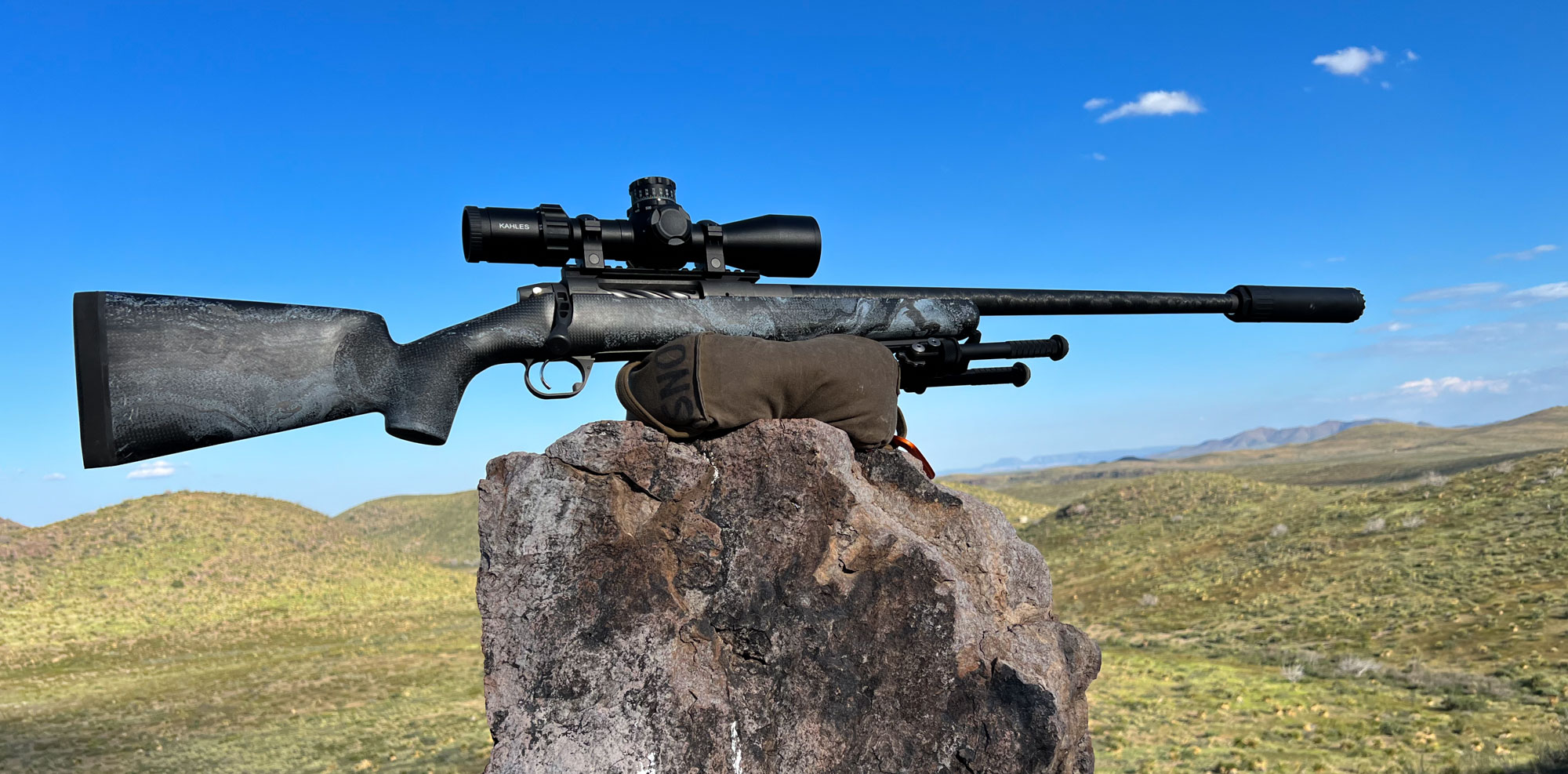
Available Rifles in the 7mm PRC
A cartridge is only as good as the number of firearms makers that agree to chamber it. And by this measure the 7 PRC is off to a good start. Although I’m sure there are plenty of smaller custom rifle makers champing at the bit to build rifles in the this round, too, the official list of companies planning to make rifles in this round includes the following:
- Allterra Arms
- Best of the West
- Christensen Arms
- Fierce Firearms
- Gunwerks
- Hill Country Rifles
- H-S Precision
- Horizon Firearms
- J.P. Sauer & Sohn
- McWhorter Custom Rifles
- Proof Research
- Remington
- Ruger (coming later 2023)
- Savage
- Seekins Precision
- Short Action Customs
- Springfield Armory (coming 2023)
- TS Customs
- West Texas Ordnance
Here’s a full review of the best 7mm PRC rifles you’ll see this year.
What the 7mm PRC Does Well
- High performance long-range round with excellent accuracy and downrange ballistics
- Easy to convert a long-action rifle with a .540-inch bolt face (the most common size) to 7mm PRC
- A potent big-game round for North America and Africa
- Allows hunters and shooters to take full advantage of heavy-for-caliber 7mm bullets between 160 and 190 grains
Where the 7mm PRC Falls Short
- Not the best choice for recoil-sensitive shooters
- Ammo is somewhat expensive and will initially be difficult to get
Final Thoughts on the 7mm PRC
I think this round is going to be another successful introduction by Hornady. It fills the gap between the 6.5 PRC on the one side and the 300 PRC on the other, which is a space that a lot of performance-oriented hunters focus on.
But students of ballistic history will certainly notice that the 7mm PRC—as a modern update to the 7mm Rem. Mag.—treads on ground that was already attempted by the 7mm SAUM and 7mm WSM, both of which fizzled, and more recently the .280 Ackley Improved, which has a devoted fan base but isn’t going to develop more than a niche following.
So why be bullish about the prospects for the 7 PRC? Unlike those other .284-caliber cartridges, the 7mm PRC is designed explicitly as an efficient platform for the heaviest 7mm bullets—those weighing 175 grains and more—allowing it to answer a need that no other 7mm magnum can do on a widespread basis. (Sorry 7mm Sherman fanboys.)
Based on my own experience at the range and in the field with the 7mm PRC, and the broad range of gun makers who have already committed to the cartridge—to say nothing of Hornady’s solid track record of successful introductions—the 7mm PRC is poised to enjoy a good run.

